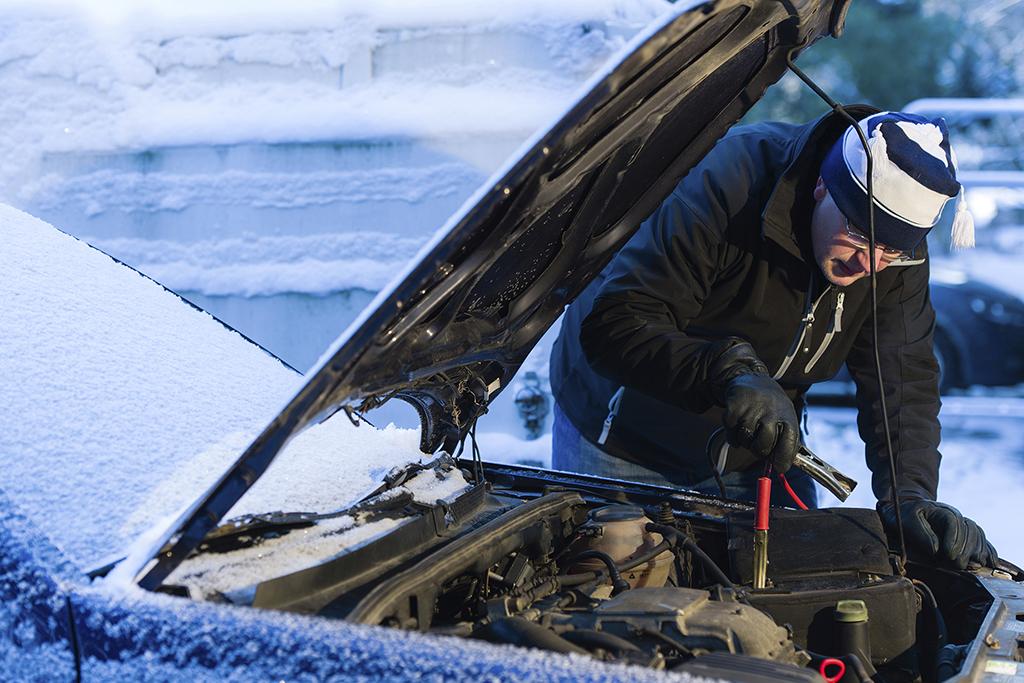
CARS.COM — Are you the type of car owner who puts off maintenance and repair as long as possible? If so, you might feel like the sun has been shining on you this winter. Generally speaking, the meteorological phenomenon known as El Niño has resulted in warmer, drier and all-around milder weather across much of the nation — likely mitigating both seasonal affective disorder and wear-and-tear on your car.
Related: AAA Study: Potholes Are a Money Pit for Motorists
Bob Henson, a meteorologist and blogger for Weather Underground, said this year's El Niño is one of the three strongest on record since tracking began in 1950. It's also one of the most confounding, as the relatively predictable weather patterns that occur during an El Niño event have held true in some regions but not in others. El Niño, Henson explained, is an interaction between ocean and atmosphere involving east-west trade winds carrying warm air from the tropics and causing uncharacteristically warm sea-surface temperatures in the Pacific along the equator.
As a result, Midwestern and Northern states have generally seen an unseasonably mild winter, as predicted. But not everyplace has followed El Niño's modus operandi this go-round. For example, in the Sun Belt, particularly from Southern California to Texas, the cool-and-wet norm of El Niño has instead been comparatively warm and dry.
But while Henson called the trend "disconcerting" from a climatological standpoint, a milder winter is not without its advantages — less weather-inflicted abuse for your car, for one. According to vehicle-diagnostics-device manufacturer CarMD, another extreme meteorological event — namely the dreaded "polar vortex" that deep-froze a large swath of the country in 2013 — resulted in 6 percent higher auto-repair costs for motorists across the U.S. that year.
CarMD's annual Vehicle Health Index showed that during the polar vortex the volume of battery, transmission and thermostat repairs spiked, as did spark-plug replacements. That year, battery and thermostat replacements, neither of which had previously ranked, were Nos. 8 and 13 among most-common repairs, while spark plugs landed in fourth place among the most common reasons for the check-engine light to come on. The 2016 index, to be released in April, however, illustrates the upshot of this wussy winter.
"This past 2015 calendar year, during which the U.S. experienced an El Niño weather pattern, spark plugs were only the No. 8 most common reason for check-engine light issues," CarMD said in a statement to Cars.com. "Battery replacements are not listed on the 10 most common repairs this year."
The following are car parts commonly affected by extreme weather, followed by the amount of money potentially saved by not having to replace them due to the mild winter:
- Tires, since you weren't as concerned with needing that extra traction in the absence of heavy snow, $525-$725
- Wiper blades, which you didn't damage scraping ice off your windshield, $10-$65
- Battery replacement, as subzero temps didn't compromise your battery's ability to hold a charge, $110
- Brake rotors, spared rust buildup from not sitting exposed to moisture for extended periods of time, $300-$400
- Thermostat, which maintains a minimum operating temperature for the engine, $200
- Throttle position sensor, which monitors the position of the gas pedal and regulates the air-fuel mixture injected into the engine, $235
- Spark plugs and plug wires, $360
To the question of whether El Niño is your amigo, that's a total of nearly $2,100 it saved you on winter maintenance costs in the worst-case scenario. However, Steve Greenspan, education manager with Universal Technical Institute and a 30-year journeyman technician, indicated that while short-term savings from deferred maintenance may be alluring, regular, ongoing automotive upkeep is your true friend that will be there for you when you need it most.
If you stay up on your scheduled maintenance activities, your car will be ready for whatever extreme weather comes your way, Greenspan said. He suggested checking your tire-tread depth using a penny (Lincoln's head should be at least partially covered if your tread is in decent shape); taking your car to the dealer or repair shop for an inexpensive electrical system and battery check; regularly replacing your windshield wiper blades; and getting a 30- to 40-point inspection done before winter to ensure your spark plugs, filters and belts are all in good condition.
Deferred maintenance, Greenspan said, will eventually come back to haunt you and that unseasonably warm winter could turn into a cold shoulder from your car.
"If you don't like walking," he said, "get your car looked at."
No comments:
Post a Comment